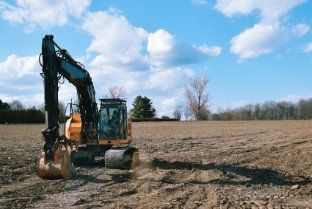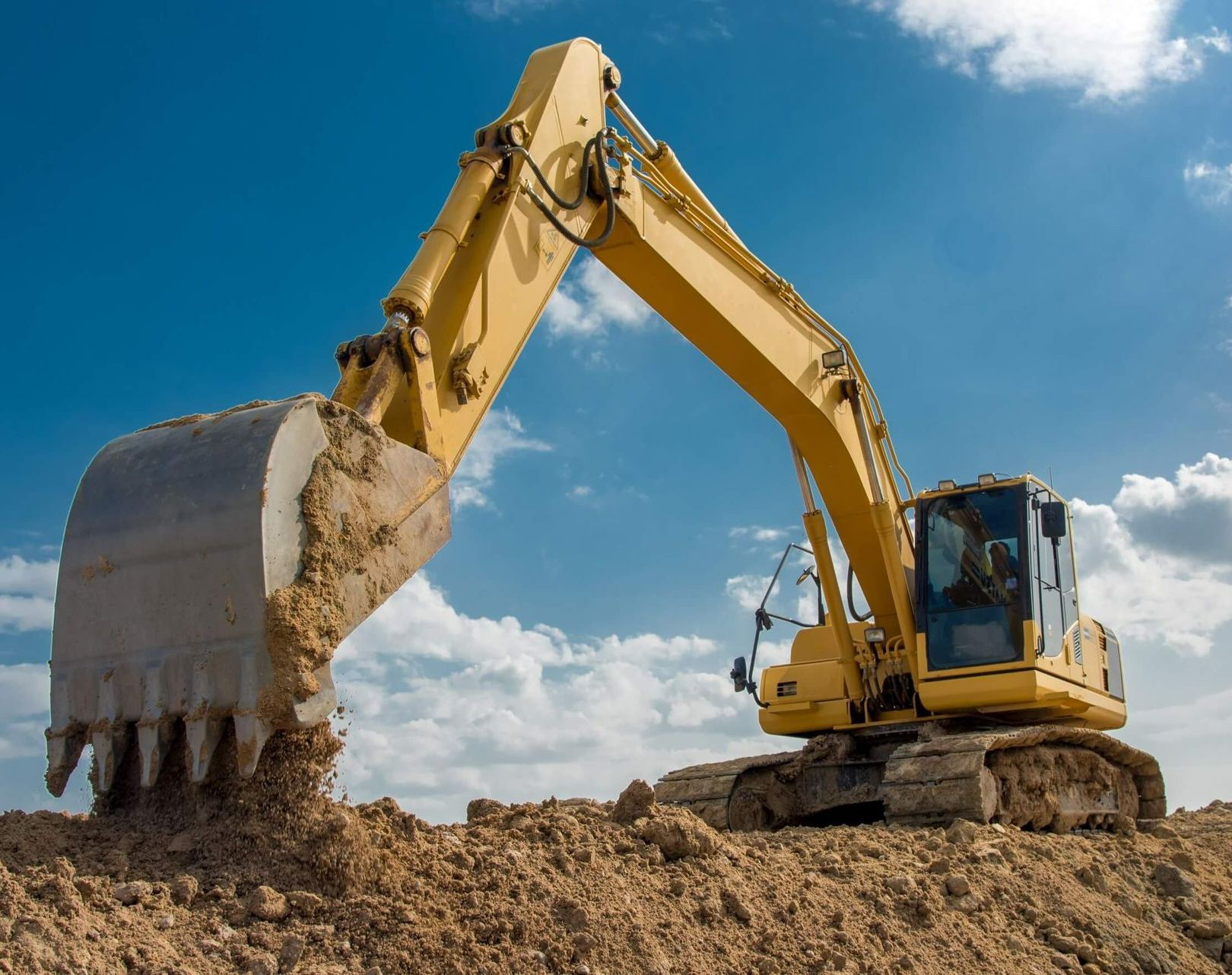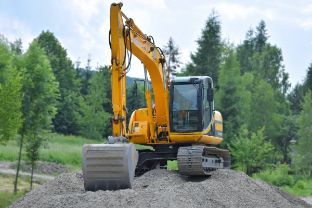Basics of Excavation and Sustainment You Need to Know

The angle of the zone of influence depends on site-specific factors, such as soil strength and density. Typically, the angle is approximately 30 degrees but can vary widely. In any case, you should always check the soil properties before starting the excavation - this can help avoid damaging the soil during construction. The angle also varies depending on the depth and type of soil.
Construction
Construction during excavation involves a series of steps to create an excavation area. First, the surface is levelled. Once this is achieved, construction can begin. Then, heavy machinery such as excavators, dump trucks, and stone slingers are used to lower the ground. These heavy machines have a high chance of causing a hydraulic or fuel leak. Therefore, it is vital to use proper safety precautions during excavation.
In addition to safety precautions, it is crucial to consider the project's impact on the environment and nearby ecosystems. Developing a soil management plan can minimize or eliminate concerns about sediment transfer. It will also allow you to utilize on-site disposal options for excess soil, saving money on disposal costs. Furthermore, you can also participate in various voluntary soil management programs.
Grading is an integral part of construction during excavation. Contractors will use heavy machinery to smooth the ground surface so that planting can occur. Grading will also make the area aesthetically pleasing. It involves using heavy machinery such as a bobcat, a blade, and a tractor equipped with a landscape rake. Excavation and grading involve more than simply moving dirt, so choosing a reputable contractor to complete these tasks is crucial. A contractor will also have the right equipment for the job.
Tunnel construction using the high-ground-stress Support System is described in claim 8. The spacing of the profile steel frame and the grid steel frame is 0.6m and 1m, respectively. Then, the shaped steel set arch (3) is 0.4m or 0.8m apart from the grid steel frame. The shaped steel set arch (3) is made of I-steel.
Site preparation
Site preparation is one of the most critical steps in the construction process. It allows the construction crew to access and move around the site. Before excavation, you must clear all vegetation and underground wood from the area. Also, it would help if you ensured the site was completely flat and free of rocks and other debris. Having a level surface is critical for safety and the construction process.
Site preparation involves analyzing the site and conducting a geotechnical site investigation. This investigation can determine the condition of the rock, soil, and groundwater. Once the survey is completed, you can determine the foundation design. Depending on the groundwater and rock conditions, you may have to install septic tanks or change your plan.
A good site preparation process should involve a soil test, which will help the excavation crew know exactly where to dig for the foundation of the building. Once the site is ready, the excavation crew can start the work. It can take a few days or weeks to complete the entire process, but it is well worth it.
Before the excavation begins, a qualified surveyor must evaluate the site. This professional will ensure the site is level and within the boundaries and parameters of the property. He will also mark the site with markers so the developer can easily find it.
Grading
Grading is an essential step in any new construction project. This process is required to create a flat surface to build on. During excavation, contractors will use heavy equipment to grade the area and remove debris. Once the ground has been graded, a contractor will use equipment to smooth out the surface, ensuring that it is flat and free from obstructions.
Grading can be a complex process requiring specialized equipment. Contractors will use bulldozers and graders to accomplish this work. Grading can also be necessary for other purposes, such as fixing drainage issues or reversing water runoff. Whatever the reason for excavation, hiring an experienced excavation and grading contractor is vital. A skilled and reliable contractor will have the appropriate equipment to complete the job.
Before grading, contractors will analyze the site conditions to determine the best method for the project. They will consider the slope of the land, the types of soil, and the distance from nearby human and wildlife populations. They will also estimate the number of workers needed to complete the project. In addition to the equipment needed, contractors will also need to provide a clear plan for the excavation process.
Grading plans provide a 3-dimensional representation of the site. They include contour lines that follow the ground's elevation. These lines are usually spaced two feet apart. The farther apart the contour lines, the gentler the slope will be. The contour lines are usually solid or dashed. The dashed contour lines represent the current contours of the site, while the solid contour lines represent the proposed contours. Another vital component of the plan is the spot elevation - this indicates the relationship of the existing elevation to the mean sea level, which is critical in some regions. The spot elevation is generally represented by an "x" if it is already present on the site.
Trenching
Trenching is the process of excavating a trench for a pipe installation. Trenches have a vertical side wall, which minimizes the amount of soil excavated. The soil excavated during trench construction can be used to backfill the trench and is also reusable as cover material for sanitary landfills and other sites.
The construction of a pipeline typically occurs between six and thirty feet below the ground surface. The excavation depth is low enough to avoid potentially sensitive paleontological resources. The Construction Contractor must comply with soil compaction standards for backfill but can minimize the risk of vibrations by using a compactor or a small vibratory hammer. Vibrations can also be reduced by using non-vibratory equipment and flooding the soils before sheet piles are driven.
Health monitoring
Deep soil movement monitoring is one of the most critical tasks during extensive foundation pit excavation and sustainment. Traditional methods involve measuring lateral displacement using inclinometers and levels. However, these techniques are often subject to significant accidental errors, take a long time to perform and produce discrete data points. A new photoelectric sensor monitoring method is now available that eliminates these problems.
The lateral displacement curve of a foundation pit reveals a bulging deformation mode. It is mainly concentrated between 40 and 50 m. It increases with the excavation depth in the early stages and then gradually decreases and stabilizes. The deformation of a foundation pit is mainly affected by precipitation inside and outside the pit.
In addition to using geotechnical instruments to measure ground movements, engineers can also use structural health monitoring sensors to determine the performance of excavation support systems. In some cases, data collected by these sensors may reveal the need to change the design. One example of this is when data collected by the sensors revealed that the reinforcement bar was not adequately strong enough, resulting in a revision of steel requirements.
Structural health monitoring aims to assess a structure's performance and provide quantitative data to the authority. Often, a site investigation is conducted before a construction activity begins, enabling engineers to determine the strength of the land and nearby assets. Various sensors are used to characterize initial site conditions, including pore pressure, the permeability of the soil, and slope stability. Using these sensors during the design and construction process can help engineers avoid problems and errors that could lead to construction failure.
If you need help with excavation, do not hesitate to contact our team at 02 4202 6381, we would be delighted to help you!
You Might Also Like









Free Instant Quote
**plus FREE bonus coupon**
Contact Form
We will get back to you as soon as possible.
Please try again later.
© 2022 AR Excavation Wollongong
This is a referral site.